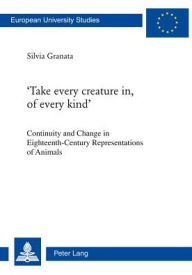'Take every creature in, of every kind': Continuity and Change in Eighteenth-Century Representations of Animals
by Silvia Granata
2020-05-08 08:28:56
'Take every creature in, of every kind': Continuity and Change in Eighteenth-Century Representations of Animals
by Silvia Granata
2020-05-08 08:28:56
The eighteenth century witnessed profound changes in the conceptualization of animals and their relation with man: cruelty towards brutes, censured since antiquity for the damage it might cause to the human community, began to be considered from ...
Read more
The eighteenth century witnessed profound changes in the conceptualization of animals and their relation with man: cruelty towards brutes, censured since antiquity for the damage it might cause to the human community, began to be considered from a different perspective, and the recognition of rights stemming from the capacity to feel – common to humans and animals alike – provided the main argument for the burgeoning anti-cruelty movement. Other discourses, however, addressed the nature of animals, increasingly suggesting unexpected affinities with humans, at times questioning age-long definitions of humanity itself. This book explores the complex interplay of factors that promoted a new way of looking at animals within the context of a more general rethinking of traditional categories. It aims at tracing the interbreeding generated by the encounter of various cultural trends which included natural theology, comparative anatomy, philosophical research, anthropological observations, and a new ideal of humanity connected with the cult of sensibility. Investigating cultural tendencies and literary practices, the author examines an impressive range of sources, revealing some of the reasons why the animal question, apparently a marginal one, emerged during the eighteenth century as a public and much-debated concern.
Less


























